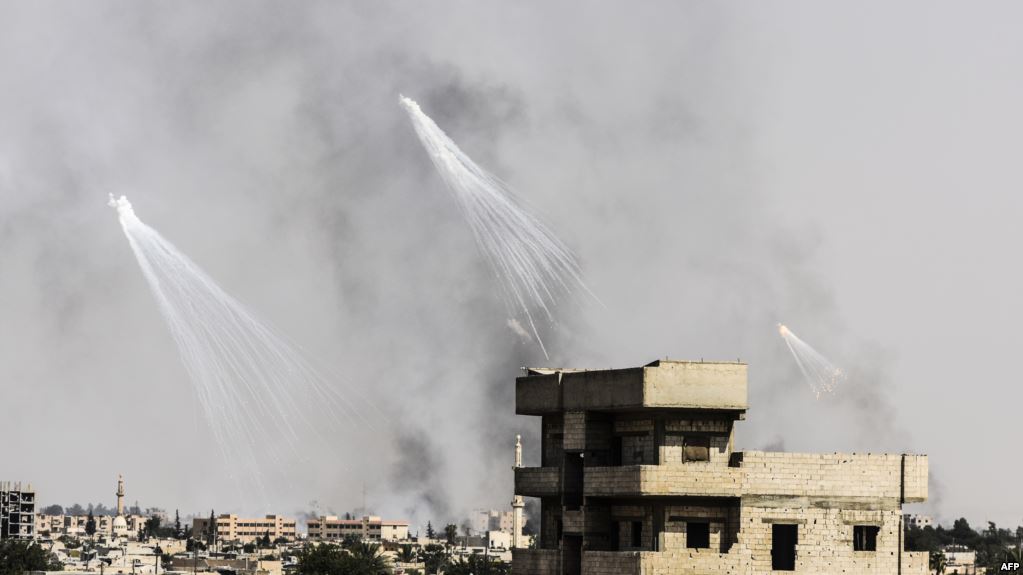As the US-led coalition accelerates its campaign to destroy ISIS’ remaining strongholds in Syria, the Trump administration faces a big decision about the future: Does it want to keep some US troops inside the country to help stabilize Syria after the jihadists are defeated, or does it want to pack up and come home?
The dilemma is eerily like what President Barack Obama faced in Iraq in 2011, and the risks and benefits are similar. President Trump, like his predecessor, has expressed skepticism about permanent US wars in the Middle East. But he also knows that pulling out US troops from bases east of the Euphrates could create a vacuum that might trigger ethnic slaughter, regional proxy wars and a new wave of jihadist violence.
The military and civilian officials who have been closest to US-Syria policy appear convinced that America should maintain a residual presence, probably something under 1,000 Special Operations forces that could continue to train and advise — and also, restrain — the Syrian Kurdish militia that has been America’s key partner against ISIS. But this alliance with the Kurds is controversial, inside Syria and out.
The political map of Syria, for now, looks like a patchwork quilt, with different bands controlled by rival groups and their patrons. The United States and its Kurdish partners dominate east of the Euphrates River. The Syrian regime, with its Russian and Iranian allies, controls the vast center of the country; Turkish-backed forces control a strip along the northern border; and a Jordanian-Russian “deconfliction” agreement has pacified the southwest.
Few analysts expect that Syria can be reunified by President Bashar al-Assad. So, for the foreseeable future, the country will be divided into these zones of influence — awaiting a political transition process that can reestablish the legitimacy and authority of a new central government in Damascus.
The US piece of this puzzle is the area east of the Euphrates. The Syrian Kurdish militia known as the YPG, advised by elite American forces and backed by US air power, has swept across this area over the past three years, and in about six weeks is expected to seize the ISIS capital of Raqqa. As they advanced, the Kurds recruited Sunni Arab allies into a broader coalition known as the Syrian Democratic Forces.
The ad hoc military alliance that produced the SDF has many critics. The Syrian opposition fears that the Kurdish fighters want to create an independent state, and neighboring Turkey sees them as terrorists. But battlefield success generates its own political momentum, and as the United States and the SDF have advanced, something of a bandwagon effect has developed. Sunni opposition groups now seem eager to fight alongside the Kurdish-led forces, under overall US command.
This new willingness to work in tandem with the Kurds was voiced by Riyad Hijab, the head of the Syrian opposition coalition known as the High Negotiations Committee. He said in a recent interview that his supporters want “to fight ISIS and other terrorist groups, alongside with the SDF, as long as we fight independently in separate fronts.”
Hijab claimed that up to 5,000 Sunni opposition forces would be ready to join the United States and the SDF in liberating Deir al-Zour, the next big town in the Euphrates Valley southeast of Raqqa. The Sunni opposition groups apparently prefer allying with Kurds to Assad’s regime.
US officials are pleased that Hijab and other opposition leaders want to join the fight in the Euphrates Valley. But they say the new recruits aren’t ready for heavy fighting, and that Deir al-Zour will almost certainly be taken by 10,000 Syrian regime troops that are already in the town, joined by regime forces now moving east, with Russian and Iranian backing. The Iranian presence worries some US officials, but they say regime control of Deir al-Zour is probably inevitable.
US commanders say the real strategic prize is further south. They say as soon as Raqqa is secure, SDF troops (joined by whatever other Arab forces are ready), hope to advance toward the lower Euphrates Valley, south of Deir al-Zour. The United States hopes that Iraqi forces across the border will help check Iranian power in the area.
What happens next? That depends in part on whether U.S. military advisers stay in eastern Syria. If they remain, say US officials, they can curb the Kurds’ ambitions for independence, deter the Turks from intervening and encourage the Sunni opposition to work with all sides. A future US presence “will be essential,” says Hijab.
And if they leave quickly? We’ve seen this movie before.
(The Washington Post)
